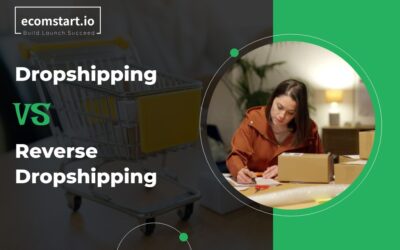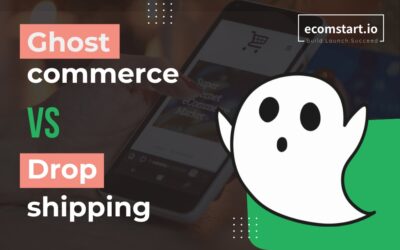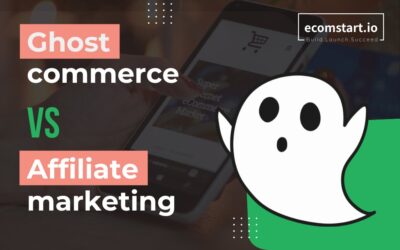How to Start Reverse Dropshipping: The Ultimate Guide
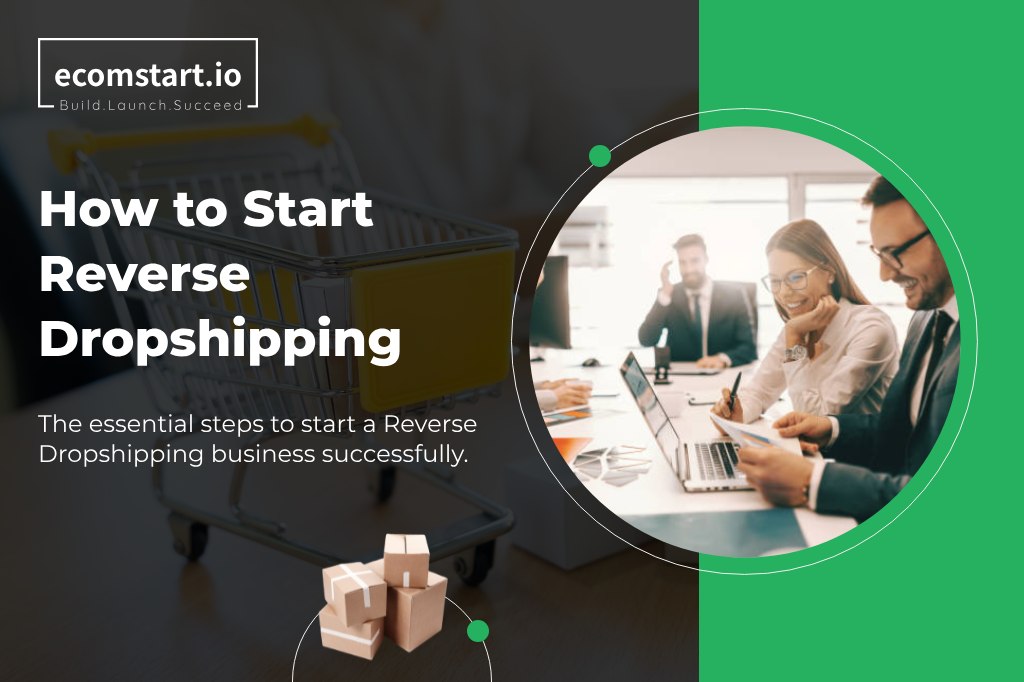
Have you ever dreamt of showcasing unique, locally crafted products to a global audience? Reverse dropshipping offers an exciting opportunity to do just that!
In this article, we will answer what reverse dropshipping is and how it works, as well as some helpful tips for operating a reverse dropshipping business successfully.
Ready to dive in? Let’s explore how to start reverse dropshipping with us!
Contents
1. How to start reverse dropshipping
Before going deeper into how to start a reverse dropshipping business, let’s take a quick grasp of reverse dropshipping definition.
Reverse dropshipping flips the script. You source high-quality goods from developed countries and sell them to customers in developing countries, acting as a middleman and fulfilling orders on demand.
It is the way this business model works.
So now, let’s see how you can implement reverse dropshipping successfully!
1.1. Find a profitable niche
First of all, you can start by considering your existing knowledge and passion. This can guide you towards niches where you can genuinely connect with your audience and offer valuable insights.
The next step is to research trending products, popular searches, and customer pain points, helping you identify potential gaps in the market.
- Market trends: Analyze current trends to understand what products are gaining popularity in your target market (developing countries). Use tools like Google Trends or social listening platforms (BrandMention) to identify trending topics and products.
- Customer interests: Research online communities, forums, and social media groups (Facebook, Instagram, etc.) to understand the specific needs and preferences of your target audience. What products are they looking for? What are their pain points?
- Product reviews: Analyze customer reviews on eCommerce marketplaces like Amazon or eBay in your target market. Common complaints could point towards potential product opportunities.
And it is essential to understand competitor saturation deeply. You can get helpful information from these sources:
- Search engines: Use Google or other search engines to identify existing businesses selling similar products in your target market. Analyze their websites, product offerings, and marketing strategies.
- Online marketplaces: Explore big eCommerce platforms in your target market to see which products are already well-represented.
- Social media: Use social media platforms to find relevant influencers and brands in your niche and analyze their content and audience engagement.
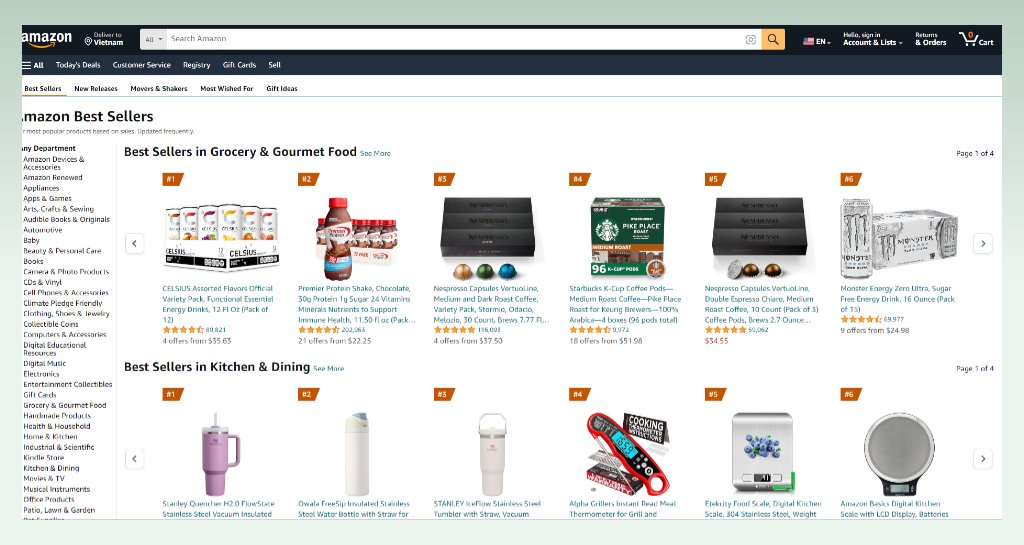
Pro tips: Targeting a specific sub-niche can help avoid direct competition with larger players. Instead of targeting broad categories, consider narrowing down to specific sub-niches.
Example: Instead of “clothing”, you can focus on “sustainable activewear for women”.
In addition, countries like China, India, and Vietnam have a growing demand for high-quality goods. So several industries can be recommended for your reverse dropshipping business including:
- Fashion: Leather goods, designer apparel, footwear
- Electronics: Latest smartphones, laptops, cameras
- Homeware: Kitchenware, furniture, home decor
1.2. Research potential suppliers
Although you can see differences between reverse dropshipping vs dropshipping, in both business models, you still act as the middleman between the supplier and the customer. So the next important step is to find reliable suppliers.
When running a reverse dropshipping business, you should focus on manufacturers located in countries known for high-quality production, such as the US, UK, Germany, or Japan.
You can find them via:
- Online directories: SaleHoo, Doba, Dropshipping.com, Thomasnet, MFG.com
- B2B marketplaces: Alibaba or Global Sources
- Industry events and trade shows

When considering a supplier, you should evaluate these factors:
- Product quality: Ensure they can produce high-quality products that meet your standards and customer expectations.
- Competitive pricing: Compare pricing across multiple suppliers to find the best value for your business.
- Minimum order quantities (MOQs): Choose suppliers with MOQs that align with your projected sales volume to avoid overstocking.
- Customization options: If needed, find suppliers who offer customization options to differentiate your products.
- Shipping capabilities: Ensure they offer reliable and cost-effective shipping options for international deliveries to your target market.
- Communication and responsiveness: Choose suppliers who are prompt and professional in their communication, as clear communication is crucial for smooth operations.
Pro tips:
- Request samples to evaluate the product quality firsthand
- Discuss pricing options and negotiate terms based on your projected order volumes
- Define communication protocols and ensure prompt responses to your inquiries and concerns
1.3. Create your online store
First of all, you need to choose an eCommerce platform like Shopify, Wix, or WooCommerce. You should consider factors like ease of use, scalability, and features tailored for dropshipping.
>> You can check out the detailed comparison between eCommerce platforms here to choose the perfect one for your business.
The next step is to design a user-friendly interface with intuitive navigation, clear product categories, and easy search functionality.
When listing products, make sure that you prepare:
- High-quality images: Showcase products from multiple angles and in-use scenarios.
- Compelling descriptions: Highlight features, benefits, and unique selling points.
- Accurate specifications: Include size charts, material information, and other relevant details.
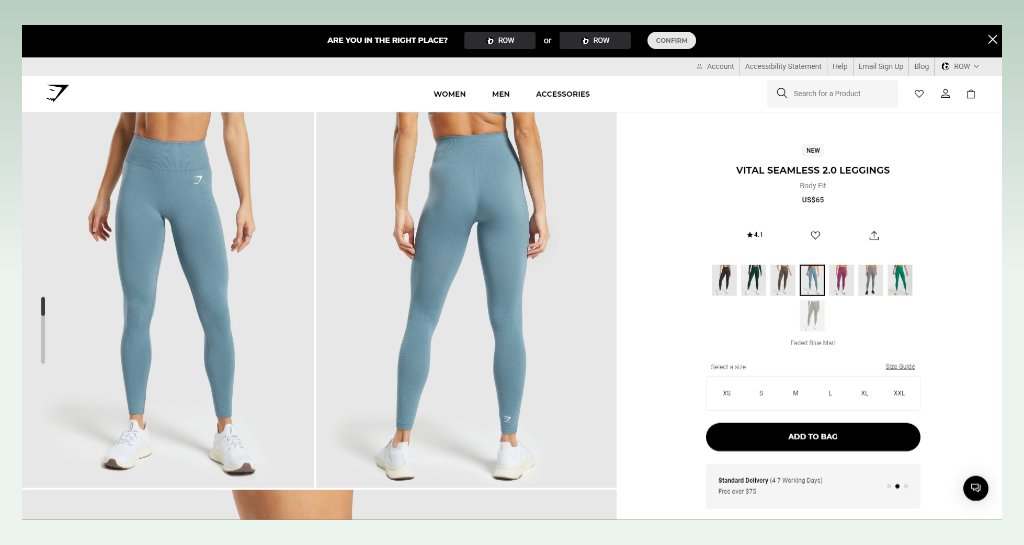
Also, to protect customer information and build trust, your online store needs to prepare a secure payment gateway.
In addition, don’t forget to add additional functionalities like customer reviews, wish lists, and live chat support to enhance the customer experience.
Pro tips:
- Consider translating your store content and adapting it to the cultural preferences of your target market
- Ensure your online store is optimized for mobile devices
- Implement search engine optimization (SEO) practices to improve your store’s visibility in search results
1.4. Market your products effectively
You can promote your products through social media channels:

Also, SEO is a must-to-do method.
- Keyword research: Identify relevant keywords searched by your target audience in their native language.
- Optimize website content: Integrate targeted keywords naturally into product descriptions, blog posts, and other website content.
- Build backlinks: Acquire backlinks from relevant websites in your target market to improve your search ranking.
And if you choose Pay-Per-Click (PPC) advertising, consider these tips:
- Platforms: Utilize PPC platforms like Baidu, Tencent Ads, and Google Ads (if applicable) to target specific demographics and interests.
- Campaign management: Develop targeted campaigns with effective ad copy and visuals to reach your ideal customers.
- Track and analyze results: Monitor campaign performance and adjust strategies to optimize budget allocation and ad effectiveness.
1.5. Proceed with customer orders
Step 1: Receive and verify customer order
Upon receiving a customer order through your online store, you need to carefully review the details, including:
- Product details: Ensure the ordered product, quantity, and any customization options are accurate.
- Customer information: Verify the shipping address, contact details, and any special instructions from the customer.
- Payment information: Confirm successful payment processing.
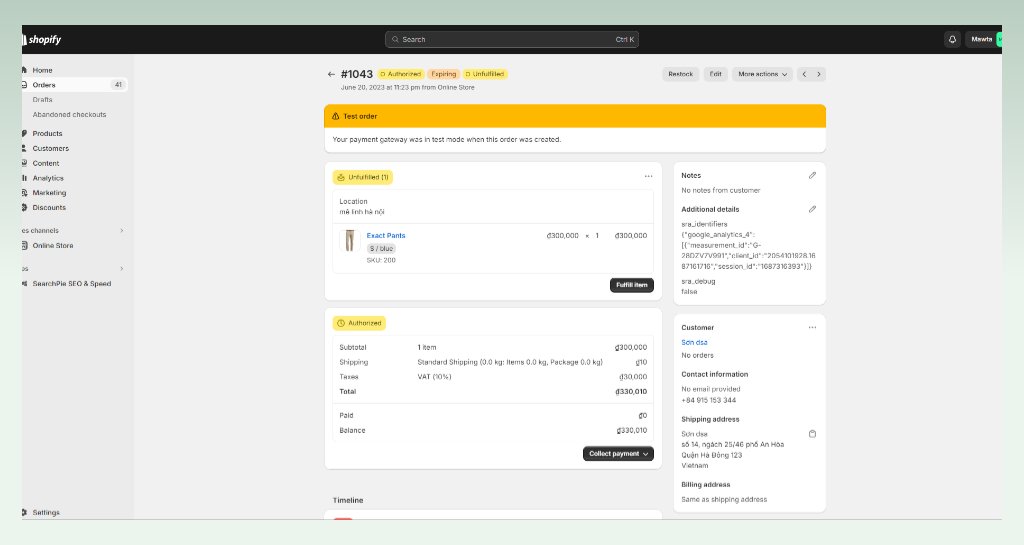
Step 2: Forward order details to supplier
Once the order is verified, it is time to promptly forward the following information to your chosen supplier:
- Customer information: Full name, shipping address, contact details (phone number and email).
- Product details: Product name, SKU (stock keeping unit), quantity, and any customization specifications.
- Order reference number: Assign a unique identifier for tracking purposes.
Step 3: Communicate clearly with the supplier
You should keep clear and concise communication with your supplier to avoid errors:
- Double-check order details: Verify the accuracy of the forwarded information before finalizing the order with the supplier.
- Clarify any ambiguities: If any aspect of the order is unclear, communicate promptly and seek clarification from the supplier before proceeding.
- Specify deadlines: Discuss and agree upon estimated fulfillment and shipping timelines with your supplier.
Step 4: Monitor order fulfillment
Once the order is confirmed with the supplier, track its progress and maintain communication:
- Request updates: Inquire about the order status at regular intervals, especially if approaching the estimated delivery time frame.
- Address any issues: Proactively address any potential delays or fulfillment problems that arise.
Step 5: Communicate with the customer
Keep your customer informed throughout the process:
- Order confirmation: Send an email confirmation to the customer, including the order details and estimated delivery time frame.
- Shipping notification: Inform the customer when the order is shipped by the supplier, providing tracking information if available.
- Address inquiries: Promptly respond to customer inquiries and concerns regarding their order.
1.6. Handle customer service and returns
Building trust and loyalty with your customers is crucial in reverse dropshipping, especially when dealing with international transactions. Here’s how to provide excellent customer service:
- Respond promptly and professionally: Address customer inquiries and concerns as quickly as possible. Utilize multiple communication channels (email, live chat, phone) to cater to different preferences.
- Be informative and helpful: Provide accurate and helpful information, addressing customers’ questions and concerns thoroughly.
- Maintain a positive and friendly tone: Even when dealing with challenging situations, maintain a professional and courteous demeanor.

In addition, a clear and transparent return policy will help you handle customer dissatisfaction and returns efficiently. You can:
- Clearly outline your return policy: Include it on your website, in your terms and conditions, and during the checkout process.
- Specify the time frame for returns: Define the window (e.g., 30 days) within which customers can request a return.
- Outline acceptable reasons for returns: Specify reasons accepted for returns, such as damaged products, wrong items, or incorrect sizing.
- Explain the return process: Detail the steps involved in initiating a return, including how to contact you and return the product.
- Clarify who bears the return shipping cost: Decide whether you or the customer will be responsible for return shipping costs.
Pro tips:
- Implement an RMA (Return Merchandise Authorization) system to track and manage return requests effectively
- Provide clear instructions to customers
1.7. Analyze data and optimize your business
You can regularly monitor various data points to gain insights into your business performance. These metrics can include:
- Website traffic and conversion rates: Analyze website traffic sources, user behavior, and conversion rates to identify areas for improvement in your marketing and sales efforts.
- Customer acquisition cost (CAC): Track the cost associated with acquiring new customers.
- Customer lifetime value (CLTV): Measure the total revenue a customer generates over their relationship with your business.
- Product performance: Analyze which products are selling well and which ones are underperforming.
- Supplier performance: Track fulfillment times, communication effectiveness, and product quality from different suppliers.
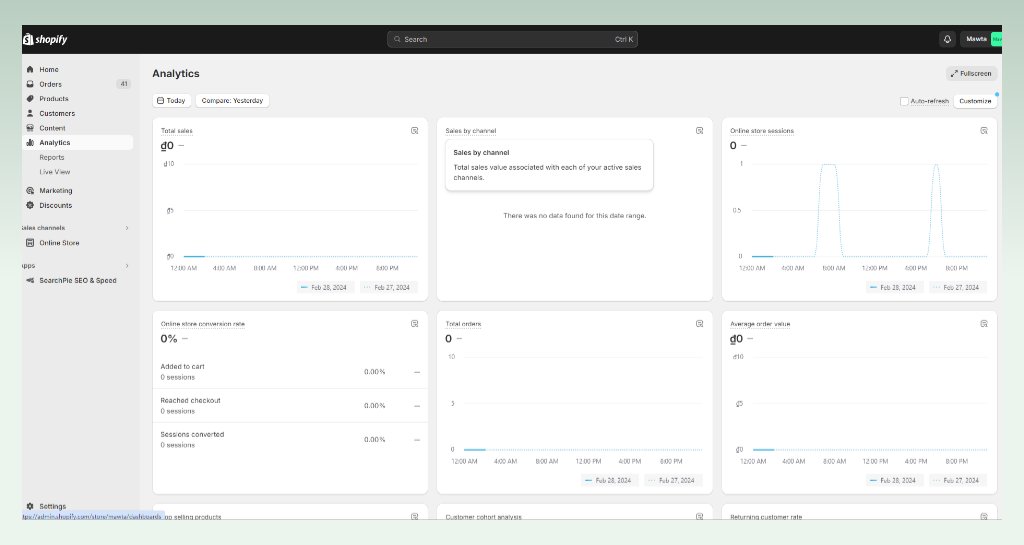
Based on the collected data, you can identify trends and patterns in customer behavior, product performance, and marketing effectiveness.
2. Tips for successfully implementing reverse dropshipping
2.1. Consider financial aspects
While inventory investment is minimal, you should consider costs associated with website development, marketing, legal fees, and supplier deposits.
Also, it is vital to research and select reliable payment processing solutions to accept payments from customers in your target market.

When doing reverse dropshipping, you need to understand and manage currency fluctuations between your operating currency and the currency of your target market.
2.2. Pay attention to legal and regulatory aspects
Make sure that you comply with all import and export regulations in both your source and target countries. This may involve obtaining necessary licenses and permits and paying potential customs duties.
And be mindful of intellectual property rights associated with the products you are selling. It is a must to have the necessary permissions or licenses to avoid legal issues:
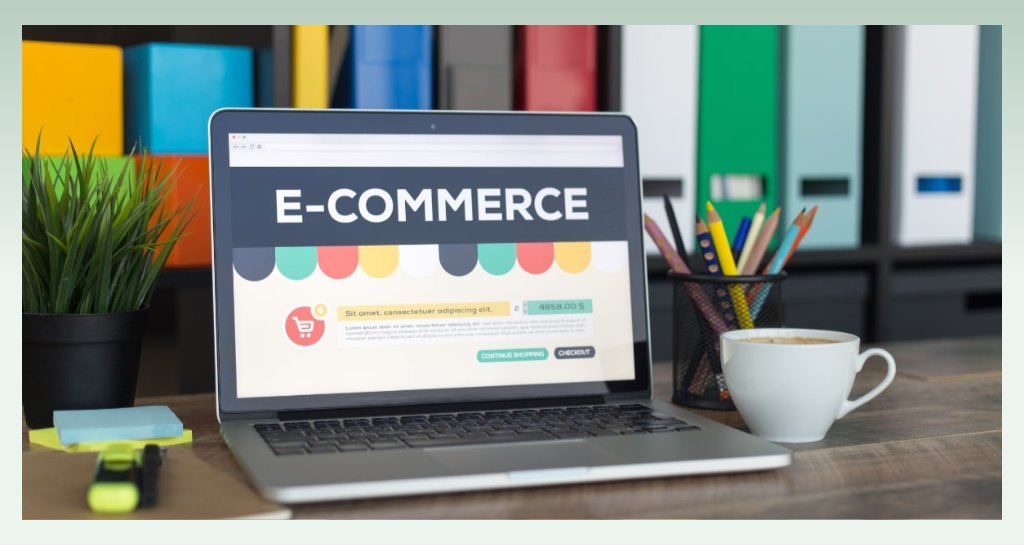
2.3. Invest in marketing tools
Here are some popular marketing tools you can consider for your reverse dropshipping business.
Social media marketing:
- Free: Facebook Creator Studio, Instagram Business Profile, Twitter Analytics, etc.
- Paid: Hootsuite (Manage multiple social media accounts from one platform), Sprout Social (Performance tracking with detailed analytics), etc.
Search Engine Optimization (SEO):
- Free: Google Search Console, Google Analytics, SEO Quake, etc.
- Paid: Ahrefs, SEMrush, Moz Pro, etc.
Pay-Per-Click Advertising (PPC): Google Ads, Facebook Ads, TikTok Ads, etc.
Content marketing:
- Free: Canva, Unsplash, Pexels, Google Trends, etc.
- Paid: Adobe Creative Suite, Grammarly, etc.
Email marketing:
- Free: Mailchimp, MailerLite, etc.
- Paid: Constant Contact, Klaviyo, ActiveCampaign, etc.
2.4. Highlight unique values of products
When it comes to how to start reverse dropshipping, showcasing the uniqueness and origin story of your products is a powerful tool to capture your audience’s attention and build brand loyalty.
You can feature the artisans, craftspeople, or communities behind your products, adding a personal touch and fostering emotional connection. Also, it is a great idea to explain the cultural context and traditions embedded in your products, making them more than just commodities.

The products of reverse dropshipping should be described clearly in how the unique materials, techniques, or processes used contribute to the product’s quality, durability, or cultural value.
These things will set your products apart from generic items and create a powerful emotional connection with your audience.
3. Conclusion
To sum up, we hope that this guide can equip you with the essential steps to launch your successful reverse dropshipping journey.
Let’s connect with more eComStart resources to start building your path towards eCommerce success!
4. FAQs
To kickstart your reverse dropshipping journey, focus on these key steps:
– Research wealthier populations in developed nations as your target market
– Research and identify unique, high-quality products that resonate with your target audiences
– Find reliable local manufacturers with good quality and ethics
– Choose a platform and design a user-friendly website
– Partner with international shipping companies
– Develop a marketing strategy and promote your products
To find reliable reverse dropshipping suppliers, you can:
– Use online directories: Search industry-specific platforms like Spoga (Home & Decor) or Global Sources, focusing on “fulfillment by merchant” options on eCommerce marketplaces like Alibaba.
– Attend trade shows: Network and gather recommendations for reputable suppliers.
– Collaborate with local business associations: Tap into their network of potential local manufacturers and exporters.
To effectively market your reverse dropshipping business, you can:
– Highlight product uniqueness: Focus on stories, craftsmanship, and cultural appeal.
– Content marketing and storytelling: Educate your audience through blog posts, videos, and user-generated content.
– Targeted social media marketing: Use relevant platforms, visuals, and targeted ads.
– Search engine optimization (SEO): Optimize website content and build backlinks.
– Public relations and influencer marketing: Seek media coverage and collaborate with relevant influencers.
Some helpful suggestions to proceed with the fulfillment include:
– Partner with reliable international shipping providers
– Implement an Order Management System (OMS) to automate tasks, improve accuracy, and gain real-time visibility
– Define timelines, packaging, and labeling requirements with suppliers
– Display estimated costs and times, provide tracking options, and communicate proactively.
– Consider multiple shipping options
Setting up a warehouse for reverse dropshipping requires careful consideration:
– Location: Choose a location accessible to transportation hubs, potentially near your target market, and compliant with regulations.
– Space: Consider product size and volume, future scalability, and clear organization for efficient picking and packing.
– Security and inventory management: Implement security measures, utilize an inventory control system, and establish efficient order fulfillment processes.
– Additional factors: Evaluate costs, invest in relevant technology, and ensure compliance with labor laws if employing staff.



